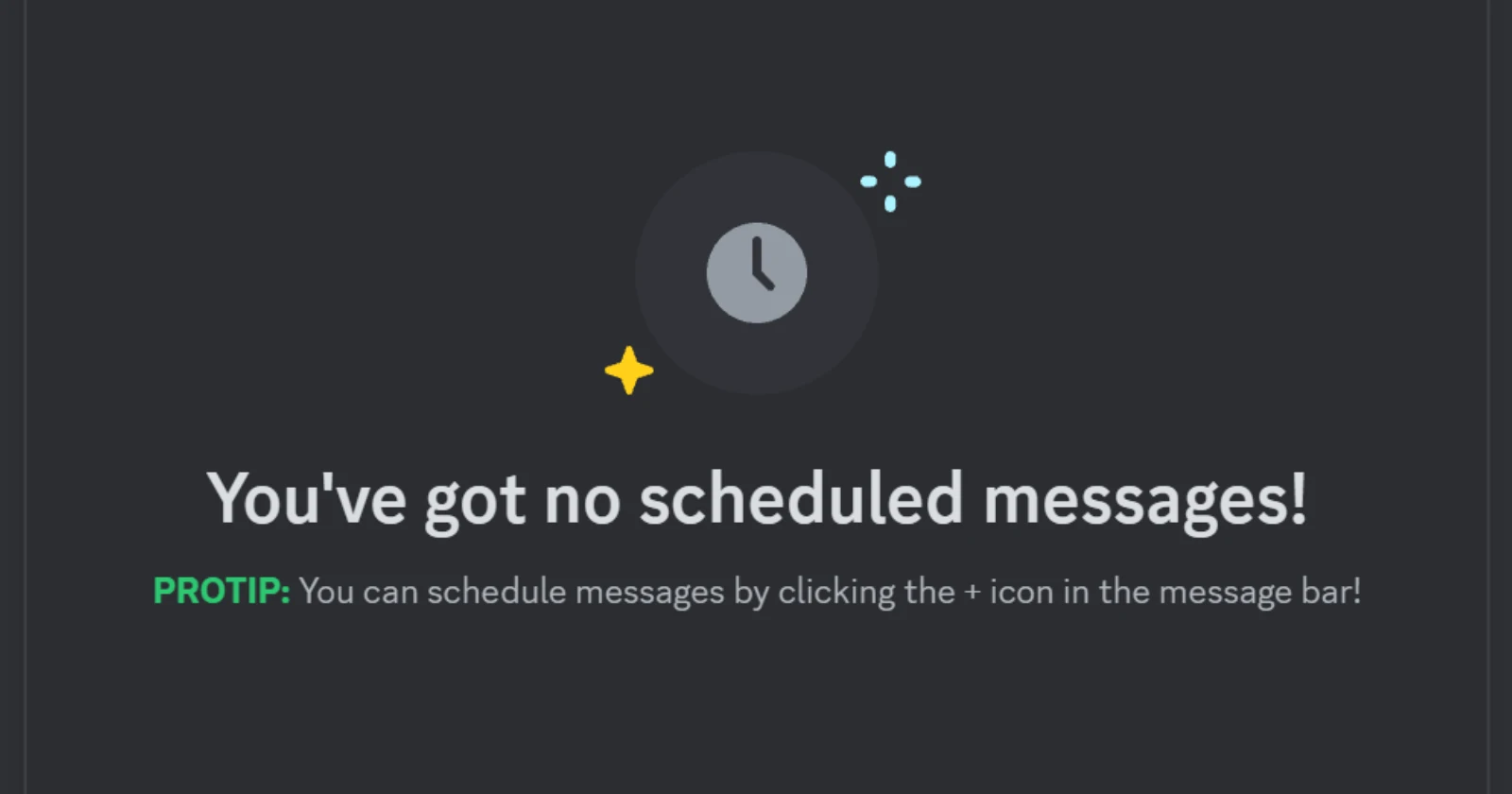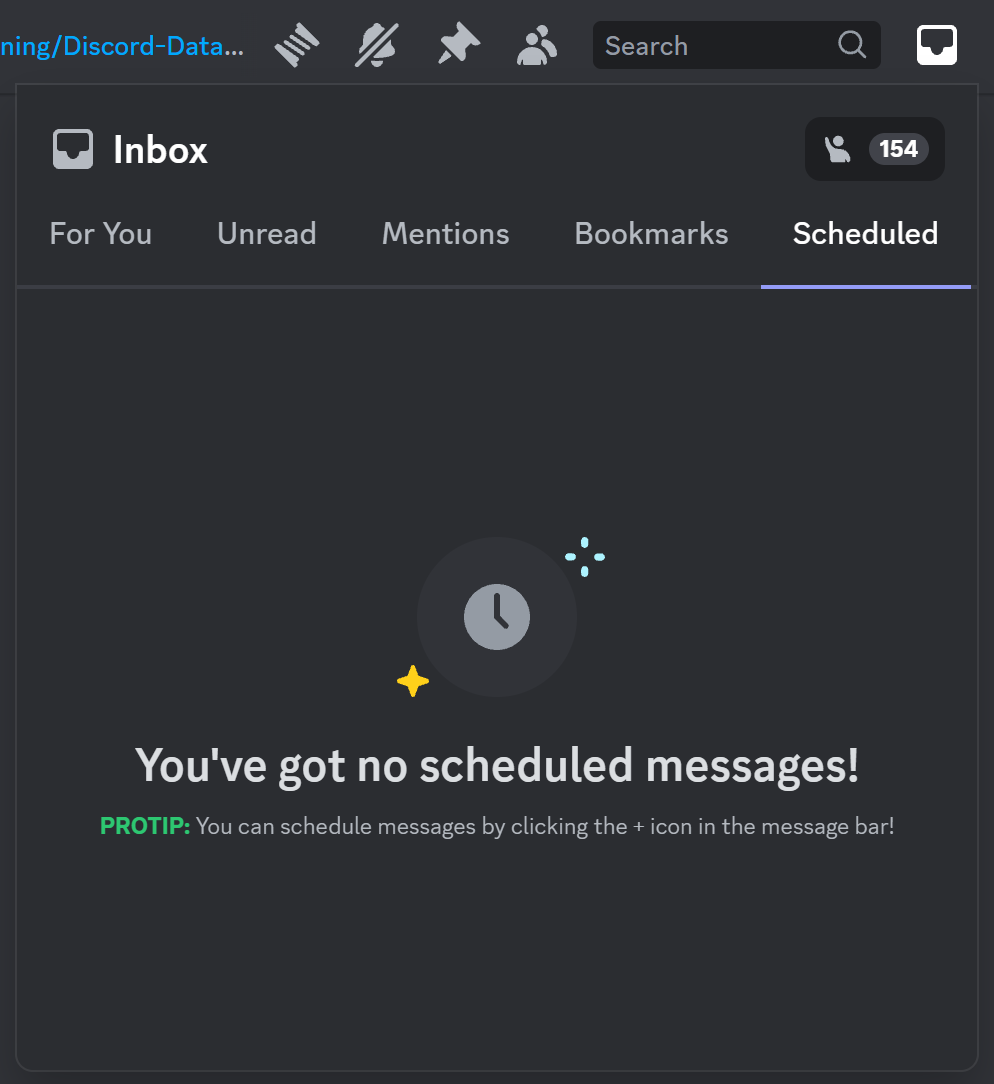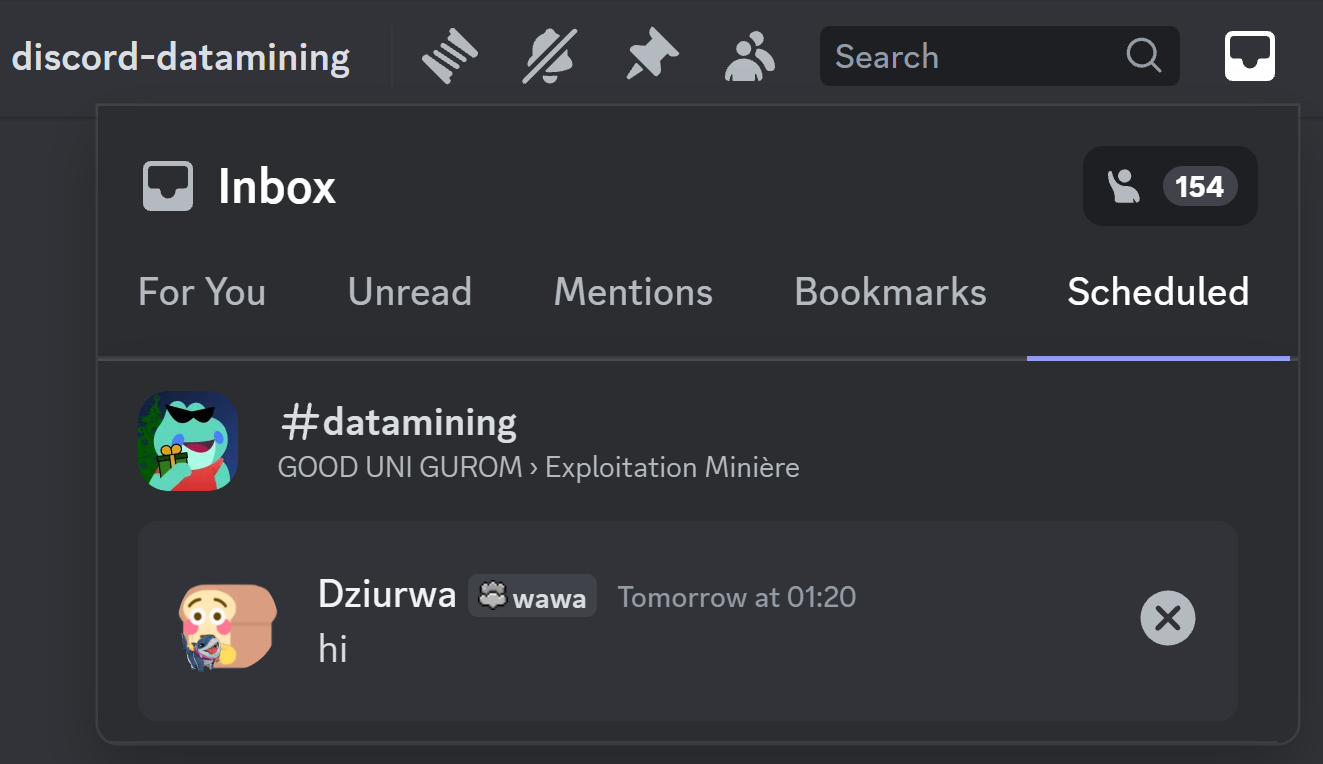Discord might be working on a much-needed feature — scheduled messages. Many have requested the feature for years, but it seemed like Discord didn’t find it a priority. However, things might change soon as screenshots shared online show a new “Scheduled” tab appearing in the inbox section, where users can view and manage their scheduled posts. This feature could allow users to plan announcements, reminders, or simple messages to be sent automatically at a future time.
This potentially upcoming feature was spotted by the Discord Previews account on Mastodon. Currently, scheduling messages in Discord is not a built-in feature. Users have relied on bots or third-party tools to get the job done. This workaround works but isn’t ideal for everyone. A native scheduling tool would simplify things and make the process more seamless for both casual users and server admins.
One of the screenshots shows a clean interface with a section reading, “You’ve got no scheduled messages!” and a tip about scheduling messages by clicking a “+” icon. In another image, a scheduled message appears with details about the sender, the target channel, and the planned send time.
The ability to schedule messages could be especially helpful for community managers who want to post announcements at specific times or keep conversations active during off-hours. Server owners might also use it for reminders about events, rules, or updates without being glued to their screens 24/7.
There’s no official word from Discord yet about when — or if — this feature will fully launch. The development appears to be in early stages, as it has surfaced through data mining. Discord often experiments with new features before rolling them out broadly, so it’s unclear how long users will need to wait. Moreover, there’s always a possibility that the team could decide to scrap the plan to release the feature altogether.
For now, users can only hope this useful feature becomes widely available soon. Until then, bots will remain the go-to solution for scheduled messaging needs. Still, it looks like a native solution might be closer than ever.
TechIssuesToday primarily focuses on publishing 'breaking' or 'exclusive' tech news. This means, we are usually the first news website on the whole Internet to highlight the topics we cover daily. So far, our stories have been picked up by many mainstream technology publications like The Verge, Macrumors, Forbes, etc. To know more, head here.




